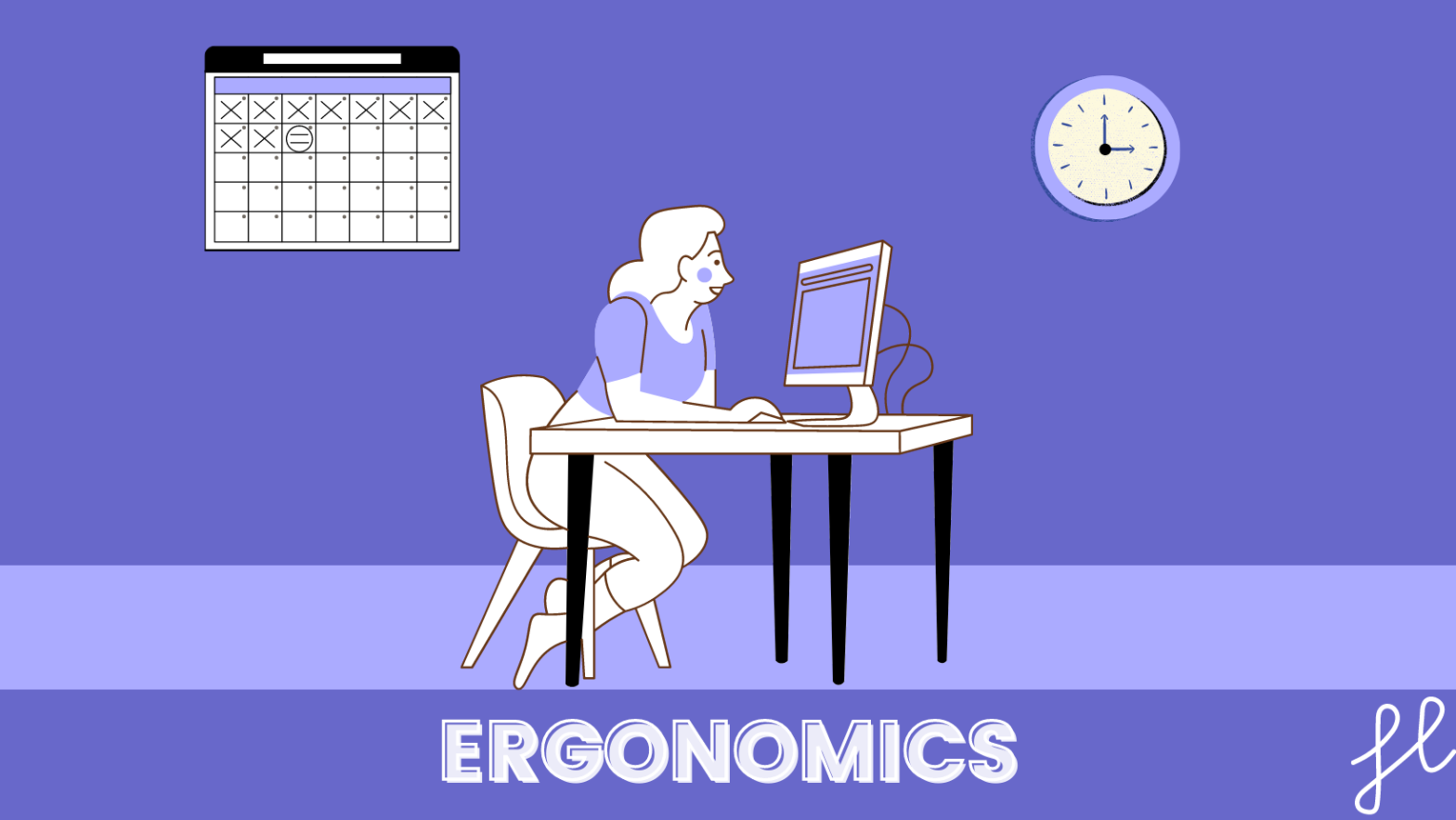Bad posture and sitting down for long periods of time cause significant damage to your body, like carpal tunnel syndrome and repetitive stress injuries.
Ergonomics is a field of study that makes products and workspaces better to cause less strain, fatigue, and injuries. One of the main goals of ergonomics is primarily to have a relaxed and comfortable posture.
Why Is Ergonomics So Important?
Whether at the office or at home, many people sit in front of a computer for hours every day without thinking about what it does to their bodies. They hurt their bodies every day, leading to occupational injuries by extending their wrists, slouching, sitting without footrests, and squinting to look at monitors that aren’t in the right place.
These habits can cause cumulative trauma disorders or repetitive stress injuries, affecting your health for the rest of your life. Pain, muscle fatigue, loss of feeling, tingling, and a drop in performance are all possible signs.
Benefits Of Ergonomics
Skyrocket Your Creativity
According to ergonomic experts, take breaks and adjust your posture to improve your mental health, productivity, and creativity. In fact, a certain study has found that regular scheduling breaks can help you think more creatively and generate new ideas.
Useful Ergonomics Tips To Keep In Mind
Sit Straight
The most important aspect of good ergonomics is maintaining a straight seating posture. For example, if you sit on a couch for an extended period of time, you’ll develop a hunched back like the Hunchback of Notre Dame. Investing in a top-notch ergonomic chair is the best solution. It allows you to recline backward for breaks, provides lumbar back support, and helps to prevent neck and shoulder pain.
Get A Desk At The Right Height For You
The right desk height is as important as the right chair for a variety of reasons. Your elbows will naturally rest on the desk, ensuring proper wrist alignment, and you will have easy access to the keyboard and mouse. Furthermore, the monitor screen will be at eye level, reducing neck strain.
Make Sure To Move Around Periodically
Even if you’re sitting in the correct position, you’ll feel uncomfortable because your body is used to being stagnant. It’s also a great idea to get an office desk or even a lap desk. It’ll help you stay focused on the task at hand and alleviate back pain.
The 20/20/20 Rule
You need to concentrate on your work, but that doesn’t mean you have to stare at the computer screen nonstop. Spend 20 seconds looking at something 20 feet away for every 20 minutes spent looking at a computer screen. This relaxes your eye muscles and reduces eye strain. Doing this will provide some much-needed rest to your eyes.
Don’t Forget to Keep Your Work Area Neat and Tidy.
A messy workspace can be a massive nuisance while working. A clean desk, on the other hand, will help you concentrate. You’ll also be able to grab everything you need quickly.
Try To Keep Your Computer A Reasonable Distance Away From Your Eyes
Did you know that the display screen of your monitor should be at arm’s length? If you position the screen too close to or far from your body, you may experience eye strain. The ideal solution is to place your desktop at the optimal distance.
Ergonomic Injuries
Lower Back Pain
Almost every adult in the world has experienced lower back pain, whether work-related or not. Lower back pain can be debilitating for employees in manufacturing, industry, shipping, and other high-activity roles. It can quickly become a major injury. Overexertion, poor mechanics, fatigue, and ill-fitting equipment can cause lower back pain and injuries.
Tennis Elbow
Tennis elbow causes pain or inflammation where the tricep connects to the elbow joint. Epicondylitis is a sports injury, but it can affect workers in industries that require physical exertion.
Carpal Tunnel Syndrome
Carpal tunnel syndrome (or CTS), common among office workers, affects a significant portion of the workforce in manufacturing and industrial settings each year. It happens when the wrist muscles and tendons become inflamed due to overuse and poor mechanics, causing them to swell and put pressure on the median nerve. Many people first notice CTS as tingling or numbness in their fingers and hands, which can progress to pain and muscle weakness. CTS is more common in women than in men, but workers whose jobs require constant hand and wrist movements are at risk of developing it without ergonomic intervention.
Neck/shoulder injuries
Neck and shoulder injuries are common in many industries. Long periods of looking up or down or poor posture can cause neck injuries. Shoulder injuries can occur when employees lift heavy weights or hold their arms above their heads for long periods: constant arm and shoulder elevation cause MSDs in industrial workers.
Tendonitis
Tendonitis is a general term for inflammation of the thick, fibrous tissues that connect muscle to bone throughout the human body. Although it may sound less severe than other acute injuries, tendinitis can make it impossible to work and cause severe pain, whether it affects the arms, hips, or legs. It is most prevalent among workers whose jobs require substantial physical exertion.
Wrapping Up
Overall, good ergonomics ensure maximum comfort and safety, increasing productivity while keeping you healthy and pain-free.
We hope you enjoyed this post. Be sure to comment on your tips on good ergonomics in the comments below!

Muchas gracias. ?Como puedo iniciar sesion?
Incredible attention to detail, transformed our home completely. This is our go-to service now. Outstanding job team.
Dry Cleaning in New York city by Sparkly Maid NYC